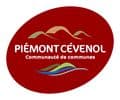Cros: the silk trail
Cros Yellow waymarksNetwork
Yellow waymarksNetwork
Cros: the silk trail
Very easy
Difficulty1h30
Duration2,1km
Distance+96m
Positive Elevation-96m
Negative ElevationLoop
Course typeEmbed this item to access it offline
À Cros, la présence du mûrier est attestée au début du XVIIIe siècle. Car tout commence avec cet arbre, dont la feuille est nécessaire pour nourrir le manhan, nom occitan du ver à soie, francisé en « magnan ». L’élevage dure quelques semaines d’avril à juillet et nécessite une main d’œuvre nombreuse et des pièces spécialisées, les “magnaneries”. Cros fut aussi le siège de plusieurs filatures, transformant le précieux cocon en fil de soie.
7 points of interest
 History
HistoryL’oustalet des Italiennes
This little house (oustalet) contained lodgings for the female workers, mostly from Italy, who were employed during silkworm breeding, to pick mulberry trees and, after the spinning-mills had been built, to unravel the cocoons.
Local labour was also very important – everyone swung into action. Know-how
Know-howLes Arnaudes mill
Like all mills at Cros, this one worked with a water reservoir, filled via a béal (canal) from the Vidourle river upstream. This wheat mill still has its millstones, engraved with the date of 1716. The first floor was set out as a magnanerie – a room dedicated to silkworm breeding – which was used until the 20th century. Some of the mulberry trees that supplied the worms’ food still stand in the surrounding area.- Agriculture
From crops to forest
Today, the village’s land is largely wooded, the forest having progressively spread since planting of crops and intensive farm use came to an end in the second half of the 20th century.
Since the Middle Ages, land use in the Vidourle valley, as in all valleys in the lower Cévennes, had been divided into three, using a system that can be described by the Latin terms hortus (gardens), ager (cereal crops, meadows, grapevines and fruit trees), saltus (sheep pasture, chestnut trees, etc.)  Architecture
ArchitectureThe terraces of Mas Bourguet
On the opposite slope of La Fage mountain, Mas Bourguet has a substantial spring, which ensures the village’s water supply. On the entire slope, terraces have been laid out to make cultivation possible. Stairs built into the thickness of the retaining walls let people pass from one terrace to the next. Everything is constructed out of dry stones, meaning without any mortar. Architecture
ArchitectureLa Mazade hamlet
The municipality of Cros consists of some ten hamlets. La Mazade (the Occitan word for hamlet) is one of the largest. In this plunging perspective, you can see, from right to left: the Protestant church; the Perrier spinning-mill; a house that has had a top floor added to set up a magnanerie; the Daudé spinning-mill; and other residences whose uppermost floors were used as magnaneries. Water
WaterThe Vidourle
The Vidourle, a Cevenol torrent whose spring is at Saint-Roman de Codières, is a fickle waterway: almost dry in the summer, it can cause terrible floods in the autumn (the so-called Vidourlades), as it did on 17 September 2014. As it crosses Cros, the Vidourle even disappears underground, to reappear just before Saint-Hippolyte du Fort. Between Saint-Hippolyte and Sauve, it is once again subterranean, before re-emerging as the Fon de Sauve, which was long believed to be a real spring. Architecture
ArchitectureThe spinning-mills
Spinning-mills were not built at Cros until late, in the mid-19th century. Before that, the thread unravelled from the cocoons was sold at the Alès fair (24 August) or directly to the spinning-mills in Saint-Hippolyte and the wider region. Two spinning-mills were constructed within a decade: the Perrier mill in 1847 and the Daudé mill in 1856. They both closed in the 1920s, due to a lack of cocoons and outlets.
Forecast
Altimetric profile
Information desks
Tourism office Piémont Cévenol, Saint-Hippolyte-du-Fort
26, rue des boisseliers, 30610 Sauve
This office is part of the National Park's associated tourist-information network, whose mission is to provide information on, and raise awareness of, the sites and events as well as the rules that must be observed in the National Park's central zone.
Open year-round
Access and parking
From Saint-Hippolyte du Fort, D1 69 upstream along the Vidourle river.
Parking :
Car park behind the temple (Protestant church).
Source

CC du Piémont Cévenolhttp://www.piemont-cevenol.fr/

Parc national des Cévenneshttp://www.cevennes-parcnational.fr/
Report a problem or an error
If you have found an error on this page or if you have noticed any problems during your hike, please report them to us here:

